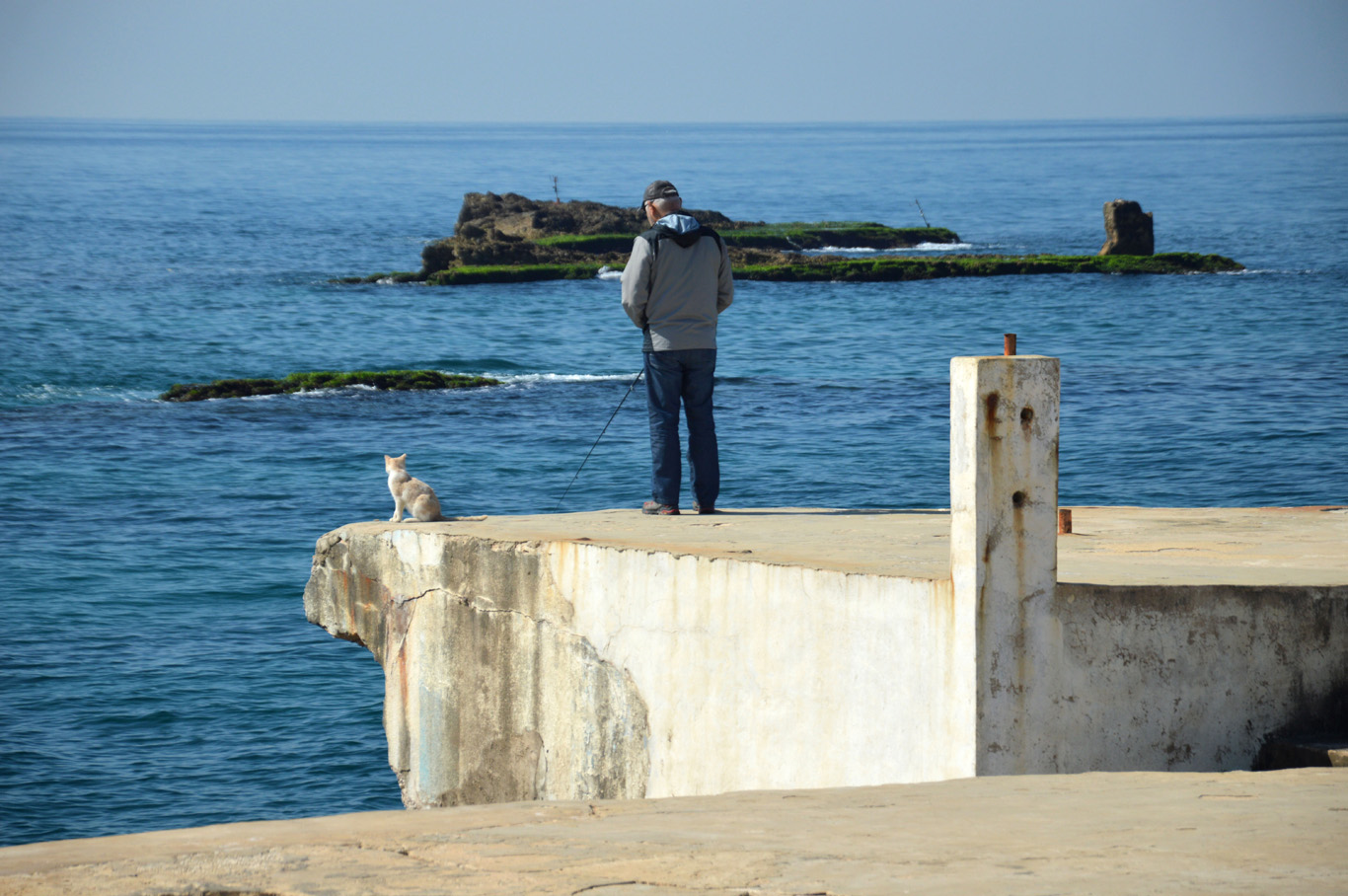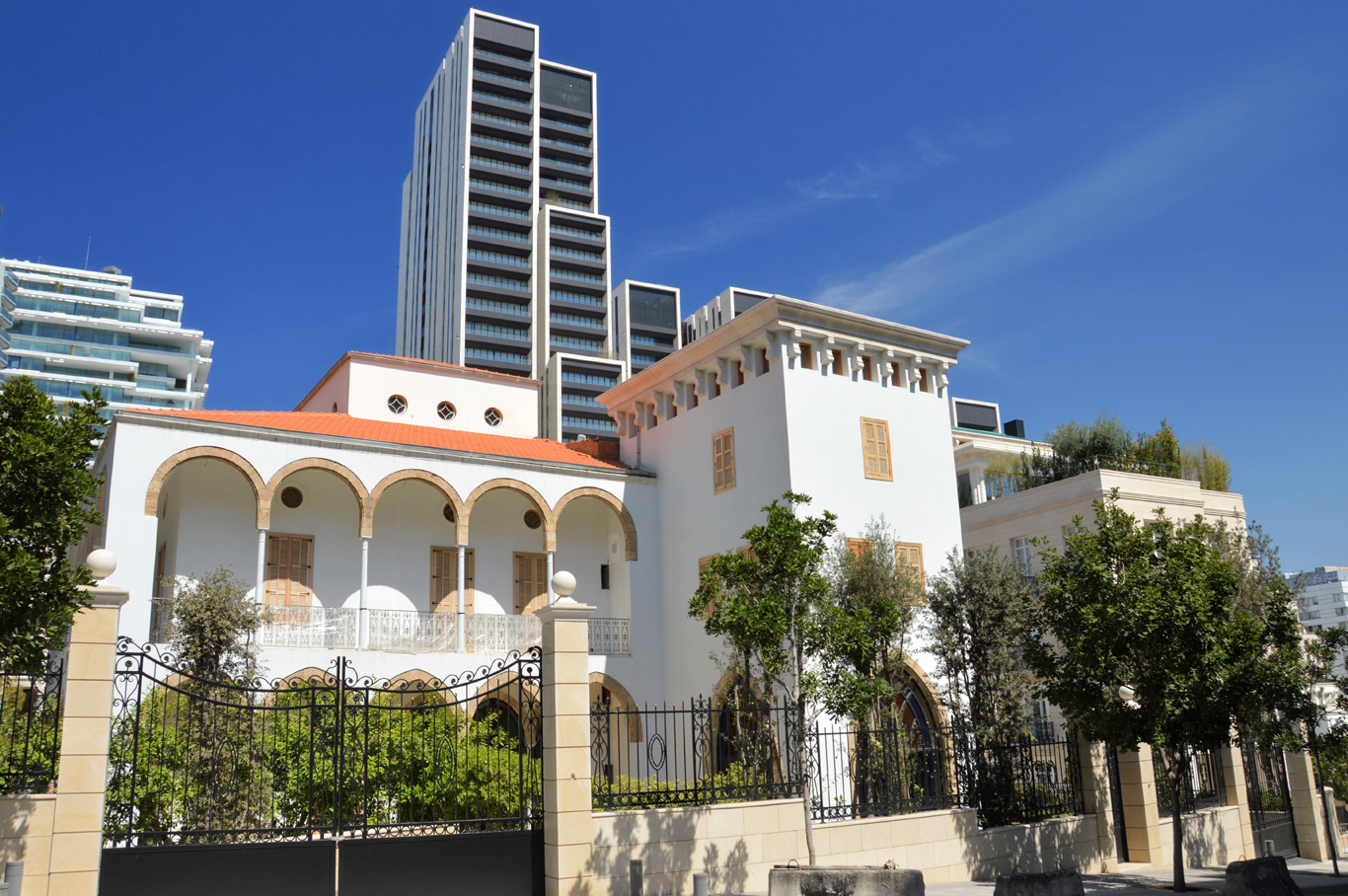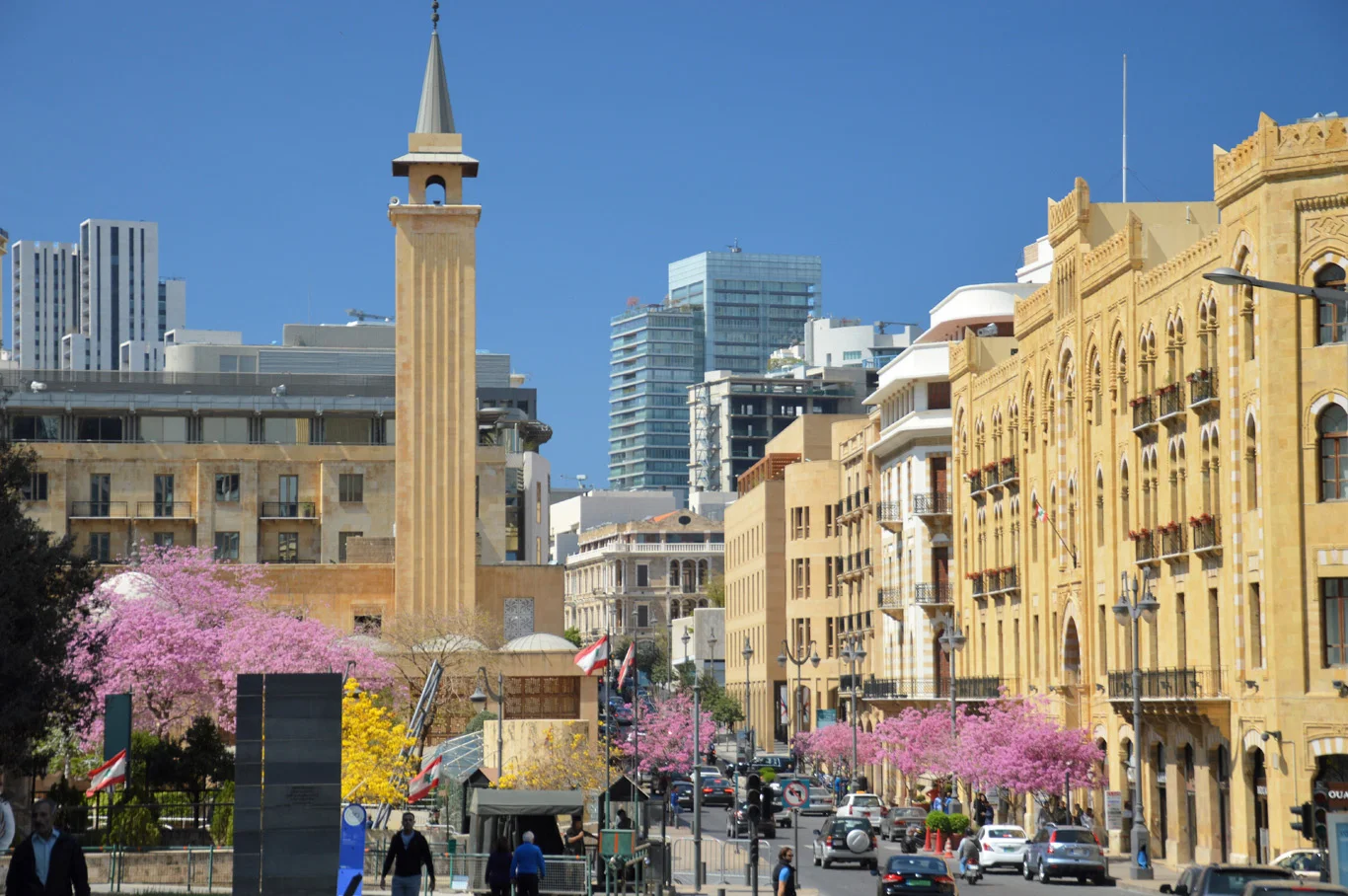Beirut used to be called the "Paris" of the Middle East. But to be honest, after having visited both cities, it's way more interesting than the real Paris. Thanks to the diversity of various cultures, the city boasts influences from Europe and the Middle East. It is especially evident in the unique, golden architecture around the Nijmeh Square. Due to the city's sensitive location, this diversity is not only a blessing , but unfortunately also a curse. As recently as the 1990s, Beirut was heavily damaged by the Lebanese Civil War. Now it has been rebuilt and if it wasn't for the reputation of the region, Beirut would be as popular as all the other great cities on our planet. But is it safe to visit it now?
Beirut - first impressions
Beirut is an extreme mix of old and new. It's full of contrast, however, this contrast is not as strong as in other neighboring cities. On arrival in Beirut, we arranged the transfer with the hotel - the driver took us straight to our accommodation, located in Hamra - a popular district full of shops and restaurants. Taxis are not recommended in Beirut - they overcharge and are not very reliable. It was March, so the accommodation wasn't too expensive and Hamra is a good starting point for exploring the city. It was also a good season as the temperature was very pleasant and the trees around the city were in full blossom. Their bright colors fitted the golden stone buildings perfectly.
At first, the Hamra district didn't seem so appealing. It looked like just an ordinary city center in southern Europe. And the prices of the meals in the restaurants weren't that attractive either - although food is delicious, you must be prepared to pay as much as in any city of western Europe.
The next morning, however, left a completely different impression. The diversity, old grand buildings around neatly renovated streets and religious sites - all intertwined with the ancient Roman ruins were magnificent. In Beirut, a church and a mosque stay right beside each other - it's an amazing view to see the beautiful examples of finest architecture together. They seem to compete with each other for height though - the church towers are as high as the neighboring mosque's minarets. Standing at a distance, it might seem to you that both - the towers and minarets have arisen directly from the same building.
If only people could live in peace - various cultures could derive what's best from one another. Instead, Beirut was bombed and almost raised to the ground in the recent war. Now it's rebuilt and full of grandeur again - let's hope it will stay this way forever.
Another great thing about Beirut is the location (and I don't mean the Middle East - I have the seaside in mind) - the city overlooks the beautiful Mediterranean coast and the sea around is incredibly attractive. Right beside Hamra, you can see the famous rocky arch (Pigeon Rocks) which is surrounded by turquoise sea.
Is Beirut safe?
Many government websites discourage a trip to Lebanon and some parts of Beirut - especially those located near the airport. But you, as a regular tourist won't be roaming around those areas at all.
For us, Beirut felt way safer than many other cities. We walked both during the day and night and didn't see anything dodgy or suspicious unlike in, let's say South Africa or some cities of South America or even Europe.
The city seems bursting with life - surprisingly there are multiple tourists there enjoying the sun, the sea and the city - however there are few westerners. The cafes and restaurants are full, the waterfront and boulevards are packed, there are crowds in the streets and you would never say you're merely 100 km (60 miles) away from Damascus - the capital of to the country immersed in the most horrible conflict in recent years - Syria.
There's one part of Beirut that does feel strange (but not unsafe) - the areas around the very heart of the city - the historical part - the Nijmeh square is... closed off for most of the locals and guarded by soldiers (sometimes they might ask you to delete photos so try to take them discreetly). However, we, as tourists were granted the access to it.
The architecture in downtown Beirut is majestic - stunning buildings made of golden stone - all in different shades of yellow/orange/beige - the place has huge potential, however it feels strangely abandoned - most of the shops and restaurants are closed; the wide, grand streets are empty and the area has an overall atmosphere of sadness. Once you get out of it, however, the usual buzz of life comes back to normal.
Overall, based on our experience, I would say that with this amount of security in place, Beirut is a safe place to visit - and it is definitely an amazing place to visit. Do monitor, however, the news as due to the proximity to the inflammatory region, the situation might change. So far, all is good, nevertheless and let's hope it will stay this way.
Political propaganda and contrast in Beirut - this is how the worse areas of the city look like
Abandoned swimming pool area near the coast
Old man fishing
Pigeon rocks
The coast of Beirut
Modern Beirut
Hamra district
Church in Hamra
Mix of architecture
What to see in Beirut
Beirut city center is small enough for you to walk around - and it is a great thing as you can see many surprising things along the way. Our accommodation was in Hamra - the popular district and it was a good choice as it's close to all the city's main attractions. Here's the map:
Map of Beirut
Number 1 on the map is Hamra where we stayed. From there, we walked towards the coast near the Raouche Rock (Pigeon Rock) - number 2 on the map. On the way there, we saw some political propaganda posters stuck onto the buildings and a very interesting, although quite eerie site of an abandoned aqua park. It must have been amazing in the pre-war times. Now it looks like a ghost town, the rusty metal contrasting with the intensely blue sea - it's located near the Luna Park, right behind the U-turn on the road leading north from the Pigeon Rock.
Then, we walked along the waterfront (number 3 on the map) and here the city looked different than in Hamra - full of skyscrapers and extremely modern architecture. The marina houses many luxurious yachts and only a few, still not renovated stubs of the buildings destroyed during the war remind of the city's tragic recent past.
After the walk along the long promenade, we entered the city again, this time close to the downtown. Here, the buildings and the area looked brand new, very neat and very fancy. The architecture was impressive and the villas and mansions were built in between the high skyscrapers. After seeing some of the neglected parts near Hamra - this looked like a different country.
Right before the main square of the city - Nijmeh Square, we stopped to admire the amazing Government Palace and the ruins of the Roman baths (number 4 on the map). Unfortunately, the area around the palace was completely closed off as there were some demonstrations, and we were unable to see much. It's surprising that the baths were discovered as late as 1960s. It was the central part of the ancient city of Berytus - a Roman colony on which the modern Beirut is built.
Number 5 on the map is the main square in downtown Beirut, called Nijmeh Square which is surrounded by amazing buildings that actually do remind of Paris - but those in Paris are a bit more gloomy and plain. Here, in Beirut, they are built using the golden stone which just looks incredible, especially during spring where the intense flowers appear on the trees. Simply amazing! As I mentioned above, unfortunately, the square was empty due to security guards present everywhere. I hope it will soon return to its original, bustling state.
Number 6 on the map indicates a few interesting sites - Beirut is a place where Christian and Muslim cultures clash and therefore it is full of the finest examples of beautiful architecture - churches and mosques are strewn everywhere all over the city. But here, the main church (19th century St. George Maronite Cathedral) stands right beside the main mosque (brand new Mohammad Al-Amin Mosque). Both temples are amazing in their grandeur and style - they should be the example of how we, humans should live - close to one another in peace and harmony.
Behind the church, you can find yet another archaeological site dating back to the Roman Times - the Forum of Berytus and Basilica Columns.
Next to the mosque, you will see the Martyr Square with the Martyr Statue - inaugurated in 1960 to commemorate martyrs executed on Martyrs’ Square in 1916, at the orders of Ottoman military ruler Jamal Pasha. Note that this monument bears a lot of signs from the civil war - it's pierced with bullets from all sides. It was renovated, but it has been decided the marks of war will stay there as a reminder of the past.
Number 7 on the map is optional - Nicolas Sursock museum - it's an amazing building of the museum that displays Lebanese & international modern art in a 1912 villa. On the way here, don't miss the impressive Armenian Cathedral, which boasts a unique architecture.
It was the last thing on our itinerary in Beirut - from here, we took Uber and we got to the beautiful old town of Byblos, where we spend the evening (I'll write about it soon). If you don't want to wander around Lebanon by yourself, we can recommend an amazing couple that offer tours in Lebanon - they took us to Byblos, Bataara Gorge, the Cedar Forests and picturesque Qadisha Valley. Here's the link to their website: http://www.living-lebanon.com/contact.html
At the waterfront
The waterfront at night
New Beirut
Villas in Beirut
Brand new side of the city
Modern Beirut
Modern architecture in Beirut
Traditional building with a modern twist
St. Louis Cathedral
Government Palace
Roman Baths
Near downtown
Forum of Berytus
St. George Maronite Cathedral
The chapel of St. George Maronite Cathedral right next to the mosque
Entrance to the The Al Amine Mosque
The Al Amine Mosque
The interior of the Al Amine Mosque
Another church right besides the The Al Amine mosque
Martyrs Statue
"Holding" the Lebanese flag
The city is being rebuilt
Architecture in downtown
Downtown Beirut
Downtown Beirut
Downtown Beirut
Downtown Beirut
The clock tower in Nijmeh Square
A church near the Nijmeh Square
Empty streets near the square
Downtown Beirut
Downtown Beirut
Downtown Beirut
A church at the square - almost seems that is connected with the mosque
Armenian Church near downtown
Beirut
Nicolas Sursock Museum
If you liked this article, you can also download it via the GPSmyCity app - you will be able to gain access to the guide, which will direct you to all the attractions described above, even if you're offline. Download it here.
Author: Tom @ Adventurous Travels
Related Posts
Copying without permission is not allowed. If you wish to use any of the site's content (photos or text) or work with us, please contact us.
We welcome questions, advice, support or criticism. However, spam comments will be removed.






















































